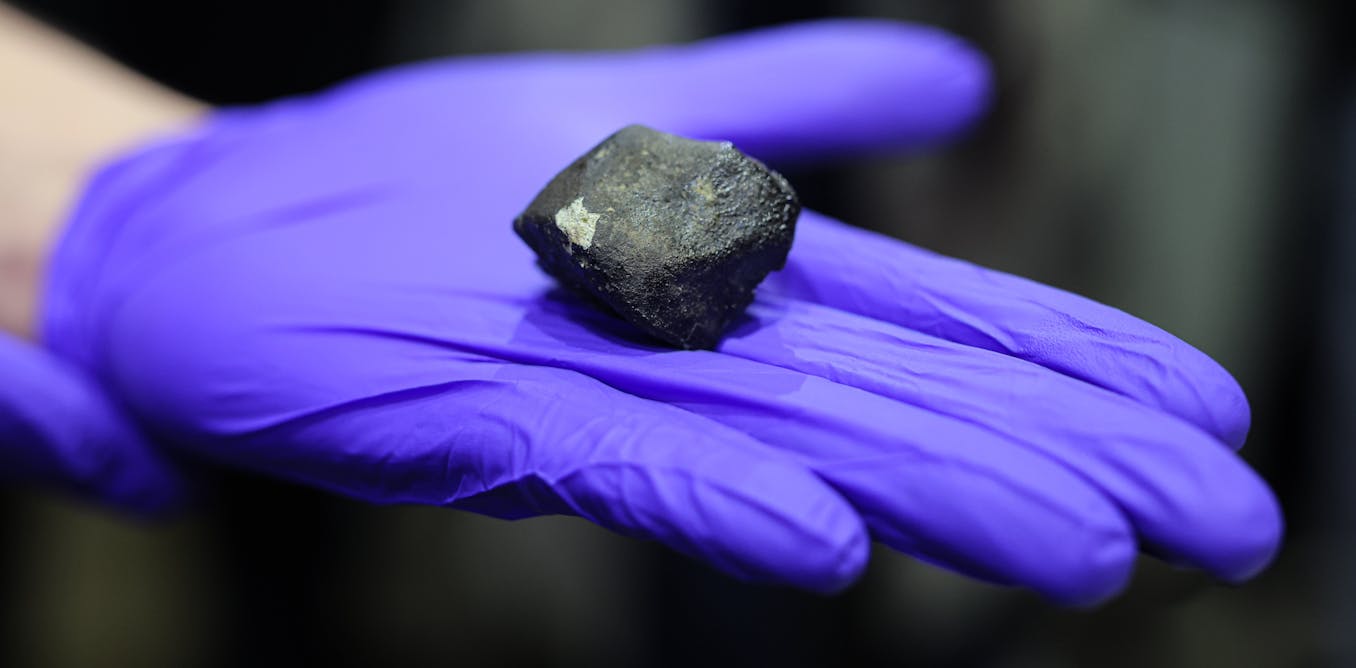On a Sunday morning in late August 2024 a nine-year-old girl named Eli-zé du Toit was sitting on her grandparents’ porch near a small town in South Africa’s Eastern Cape province, when she heard a long rumble, then heard a rustling in a nearby fig tree. As she watched, a rock fell out of the tree. When Eli-zé picked it up, she noticed that the rock had a black crust and a grey interior “like concrete”. It was warm on the crust and cold on the inside.
Elsewhere in the Eastern Cape, videos and photographs on social media of a bright light in the sky tipped scientists off to the possibility that a meteorite had fallen in the area.
A meteorite is a piece of rocky space debris that survives after colliding with the Earth.
On 26 August, a day after the event, scientists confirmed that there was sufficient evidence to link the two events to a “likely car-sized” rock fragment having entered Earth’s atmosphere and disintegrated over the Eastern Cape.
The rock young Eli-zé found was just one small fragment of that meteorite, weighing in at about 90 grams.
It was unveiled at a press conference involving scientists from Nelson Mandela University, Rhodes University as well as the University of the Witwatersrand, on 3 September.
Do we know where in space it originated?
It’s likely to have come from one of the larger bodies in the asteroid belt, which is between Jupiter and Mars. After repeated impacts onto that body, one impact will have shot this piece off and sent it on a trajectory towards Earth. We can’t yet say if that happened tens of millions of years ago or thousands of millions of years ago.


